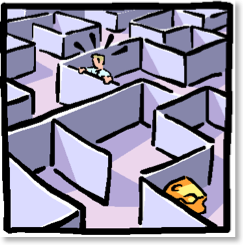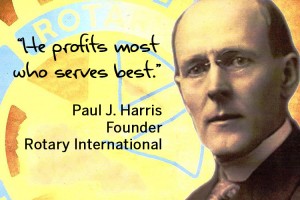 For 172 years, communication technologies have sought relevance in an increasingly noisy universe.
For 172 years, communication technologies have sought relevance in an increasingly noisy universe.
Now, well into the 21st century, there is actual management pain from an embarrassment of riches of communication innovations. And this discomfort is especially keen when staying connecting with customers: Should you call? Email? Text? How about IM?
And when should you use social media platforms? I’ve had customers who want me to connect with them on Twitter. Others send me notes on LinkedIn.
But in an era where there’s an app for everything, there is one connection method we must never be guilty of minimizing. From Morse to Millennials, in-person connection has retained its relevance as Old School fundamental and New School cool.
Indeed, face-to-face is the original social media.
Today, social media euphoria is being tempered by ROI reality. And as useful as each new communication resource proves to be, they are, after all, merely tools to leverage our physical efforts, not eliminate the basic human need for human interaction. Consider this story:
A sales manager (whose gray hair was not premature) noticed the sales performance of one of his rookies was below budget for the third consecutive month. Of course, he questioned the numbers previously but had allowed his better judgment to be swayed by plausible explanations. Now the newbie’s sales was trending, but in the wrong direction.
Upon more pointed probing, the manager discovered the reason for loss of production: too much electronic and not enough in-person connections. The rookie was relying too heavily on virtual communication at the expense of opportunities to get in front of the customer.
It turns out lack of training, demographic reality and not enough “rubber-meets-the-road” experience left the young pup uncomfortable and unprepared to ask for and conduct meetings, like a proposal presentation. He wasn’t benefiting from how the success rate of growing customer relationships can increase when critical steps are conducted in person. Consequently, this manager immediately developed a training program that established standards for how and when to integrate all customer connection tools, including face-to-face.
If your sales performance isn’t trending the right way, perhaps your salespeople need help getting in front of customers, particularly at critical steps. Like the manager above, you may need to establish specific, measurable and non-negotiable standards for when face-to-face meetings should take place.
From telegraph to Twitter there is one connection option whose relevance has borne witness to every one of the others: in-person contact. Let’s remember John Naisbitt’s prophesy from his 1982 book, Megatrends: “The more high tech we have, the more high touch we will want.”
Write this on a rock … As the original social media, face-to-face will always be relevant.








